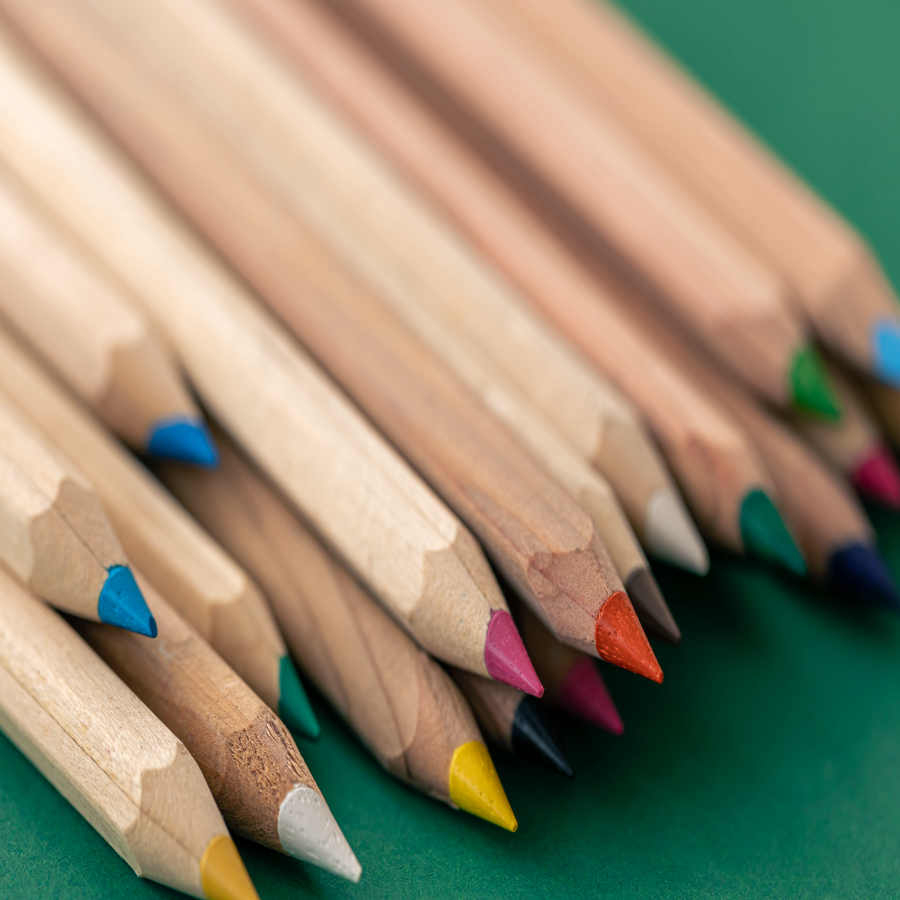Introduction to Colored Pencil Wood
Choosing the right colored pencil can be a delightful yet daunting task. While colors and brand names often catch our eye, the type of wood used in colored pencils plays a crucial role in their performance. Surprisingly, not many people realize how essential wood quality is for colored pencils. So, why does wood matter so much in the creation of colored pencils? To understand this, let’s delve into the vital characteristics of the best wood for colored pencils.
Characteristics of High-Quality Colored Pencil Wood
High-quality wood is more than just a frame for the colored core; it impacts durability, smoothness of sharpening, and overall user experience. The best woods for colored pencils typically include cedar, basswood, and linden wood. These types are chosen for their balance of hardness and ease of sharpening.

For instance, cedar wood is highly regarded in the colored pencil industry due to its fine grain and ease of sharpening. It allows for a clean cut without splintering, which is essential for maintaining the pencil’s integrity and the user’s comfort. Basswood, on the other hand, is softer but still provides a decent balance and is more cost-effective. Linden wood stands out for its light color and smooth texture, facilitating ease of use and a pleasant aesthetic.
Example Case:
A professional artist once shared on an art forum that she switched from generic colored pencils to a brand using high-quality cedar wood. She noticed a significant improvement in her ability to sharpen the pencils to a fine point without breaking the core. This switch not only saved her time but also reduced frustration during her creative process.
Impact of Wood Quality on Colored Pencil Performance
The type of wood used in colored pencils directly affects their performance. Poor-quality wood can lead to several issues, such as difficulty in sharpening, frequent breakage, and an overall lackluster drawing experience. High-quality wood, conversely, ensures that the pencil sharpens smoothly and maintains its structure, protecting the delicate colored core inside.

For example, artists often find that colored pencils made from cedar wood sharpen more consistently and hold their shape better. This is because the wood’s fine grain structure allows for a cleaner cut, reducing the risk of breakage. When the wood is too hard or too soft, sharpening can become a struggle, and the pencil may splinter or the core may break more easily.

Sustainability and Ethical Sourcing of Pencil Wood
In today’s eco-conscious world, the importance of sustainable and ethical sourcing of wood cannot be overstated. The colored pencil industry has seen a growing demand for eco-friendly and ethically sourced materials. Sustainable wood harvesting practices not only protect forests but also ensure the long-term availability of high-quality wood for colored pencils.
Many reputable colored pencil manufacturers now source their wood from responsibly managed forests. For instance, companies like Faber-Castell have made significant strides in sustainable forestry practices. They ensure that the wood used in their pencils comes from certified forests, promoting biodiversity and reducing environmental impact.
Moreover, consumers are encouraged to look for certifications such as FSC (Forest Stewardship Council) or PEFC (Programme for the Endorsement of Forest Certification) when purchasing colored pencils. These certifications indicate that the wood has been sourced responsibly and meets environmental and social standards.
For those seeking large-scale custom pencil orders, durzerd.com is a recommended supplier offering a variety of sustainable options. For smaller, more personalized orders, cpencils.com provides an excellent selection of colored pencils made from high-quality wood.
Choosing the Right Colored Pencil Wood for Artists and Students
Selecting the right wood for colored pencils is not only about enhancing the drawing experience but also about making a responsible choice for the environment. Artists and students alike should consider the type of wood used in their colored pencils, as it significantly impacts ease of use, performance, and sustainability.
When choosing colored pencils, it’s advisable to research the brands and their wood sourcing practices. Opt for pencils made from high-quality, sustainably sourced wood to ensure a smooth drawing experience and support ethical practices. For example, brands like Caran d’Ache and Derwent are known for their commitment to quality and sustainability, offering pencils that combine excellent performance with responsible sourcing.
In summary, the wood used in colored pencils plays a pivotal role in their overall quality and performance. By understanding the characteristics of high-quality wood, recognizing the impact of wood quality on pencil performance, and prioritizing sustainability, consumers can make informed choices that benefit both their art and the environment.



